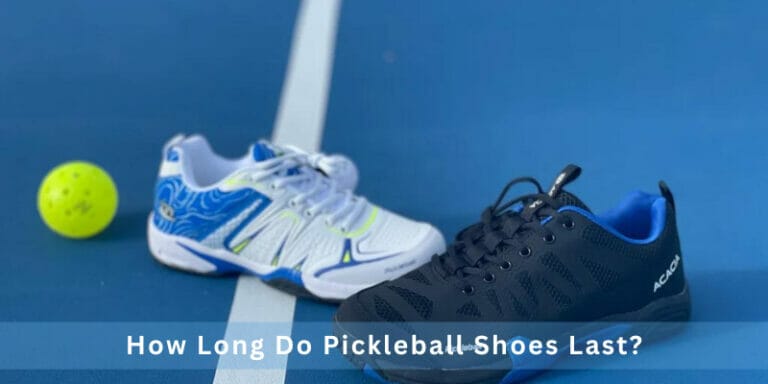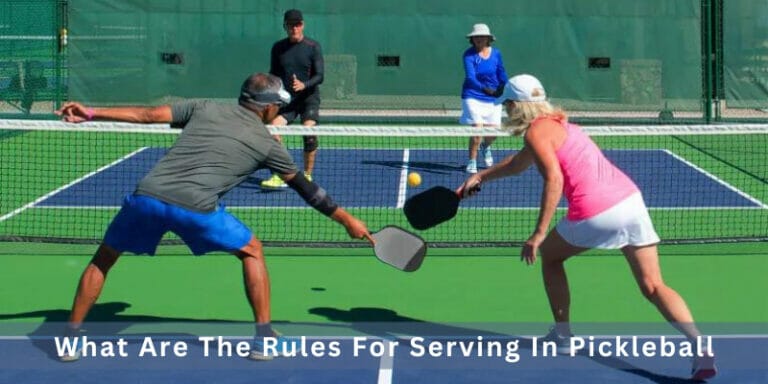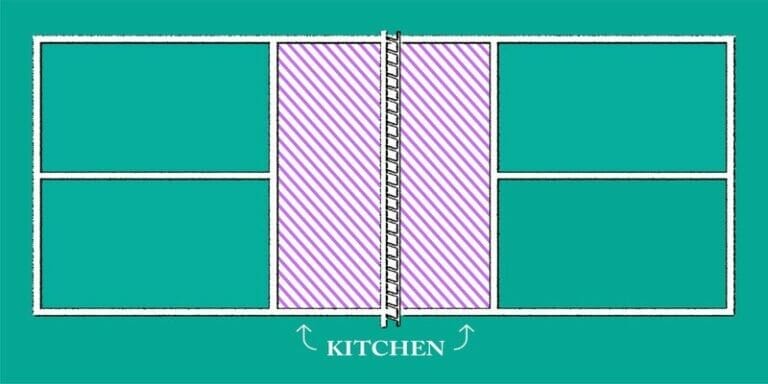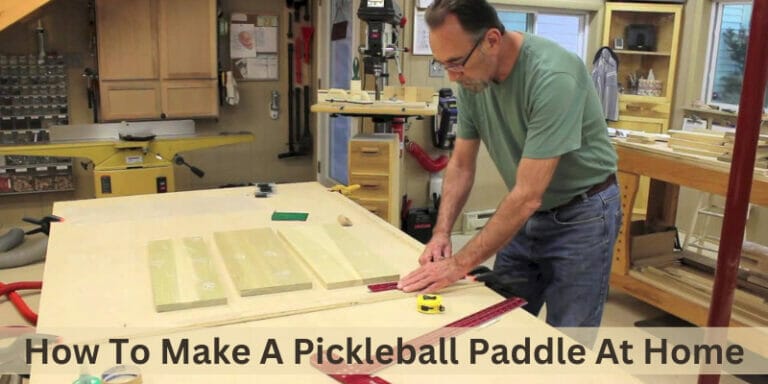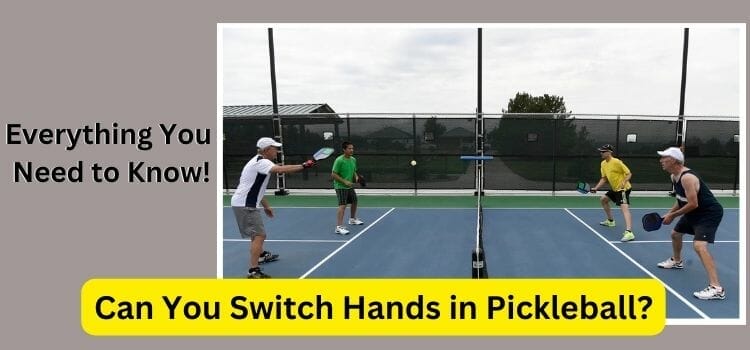How To Choose The Best Pickleball Paddle

Choosing the best pickleball paddle to fit your style of play is key to improving your game. The right pickleball paddle can make all the difference!
When choosing the best pickleball paddle for your game, look for features like weight, length, grip size, handle shape and core material. Consider your playing style and skill level when making a decision. Try different paddles to find one that is comfortable and offers optimal control on the court.
I started my pickleball journey a few years ago, and had no idea what to look for in a paddle. After trying out various paddles, I quickly realized that some were too heavy while others seemed unwieldy. It wasn’t until I tried different lengths, grip sizes, handle shapes and core materials that I found the perfect paddle for my style of play. With the right paddle, I felt a noticeable improvement in my game!
In this article I am going to talk about how to choose the best pickleball paddle and answer all the quarries of readers in this article.
How to choose the best pickleball paddle – Step by step
When choosing the best pickleball paddle for your game, here are some factors you should consider:
- Pickleball Paddle Materials
- Paddle Weight
- Grip Size and Shape
- Head Size and Shape
- Core Material (Polymer, Wood, Graphite)
- Sweet Spot Size and Location
- Textured Surface
- Flexibility
- Noise and Vibration
- Spin Generation
- Price
Now lets dive into each of these factors so that you can make an informed decision about which paddle is best for your playing style.
Factor 1: Pickleball Paddle Materials
The material used to make the paddle is the foundation for performance. Pickleball paddles are typically made of wood, composite, or graphite.
Wooden paddles are durable and inexpensive, but they are generally heavier than composite and graphite paddles.
Composite paddles are a popular choice because they are lightweight and offer a good balance of control and power. Graphite paddles are the lightest option and offer excellent control and power. Choose a paddle material based on your preferences and skill level.
Factor 2: Paddle Size and Weight
Paddle size and weight are crucial factors in determining your performance. The standard size of a pickleball paddle is 15.5 inches long and 8 inches wide. The weight of the paddle ranges from 6 to 14 ounces.
Lightweight paddles are those under 7.3 ounces while mid-weight paddles are between 7.3 and 8.4 ounces, and heavyweight paddles are 8.5 ounces or more.
Advantages of a lightweight paddle include faster recovery time at the net for quick volleys and increased accuracy with your shots due to the lighter weight heavier paddle gives more power to your shots, but can also be harder to control.
The weight of the paddle you choose should depend on your playing style. If you’re a defensive player, then a lighter paddle may be more suitable for you.
However, if you are an aggressive player who likes to generate power from your shots, then a heavier paddle may be what you need. Ultimately, it is important to try out different paddles to see what works best for you.
Factor 3: Grip Size and Style

The right grip size should allow you to hold the paddle comfortably, without having to grip too tightly.
To determine the right grip size, measure the distance between the base of your palm and the tip of your ring finger. Grip styles range from cushioned to ribbed and perforated. Choose a grip style that feels comfortable and secure in your hand.
The grip size and shape of the paddle handle affect how comfortable and secure your hold on the paddle is, as well as how quickly you can react to shots which eventually enhance your comfort and performance during play.
The width of the handle should be comfortable for your hand size, while the shape should allow for a secure grip and allow you to hold the paddle comfortably, without having to grip too tightly. Commonly used handle shapes include round, oval, and pear.
The shape and size of your grip will affect your control and accuracy on the court. If you have difficulty controlling your shots or feel that you can’t grip the paddle firmly enough, then it may be worth trying a different handle shape or size.
A well-fitted handle should feel comfortable in your hand and allow for quick reactions when making shots
Factor 4: Head Size and Shape

The head of the paddle is where you make contact with the ball, so its size and shape are important factors to consider.
A larger head size gives you more power, but can also reduce control. Smaller heads give you more control and accuracy on your shots, but less power. Paddle shapes include teardrop, flat-faced and diamond-shaped.
The size and shape of the paddle’s head will determine how much power you can generate on your shots.
A larger head gives you more power but a smaller head gives you more control.
The various shapes also affect the spin, speed, and trajectory of your shots, so it is important to experiment with different shapes to see which one suits your playing style best.
Factor 5: Core Material (Polymer, Wood, Graphite)
The core material of the paddle affects its power and durability.
Polymer cores are lightweight and give a good balance between power and control, while wood paddles provide more power but less control.
Graphite is the most expensive material used in pickleball paddles, but it gives you maximum power and control.
The core material of the paddle will affect its overall performance on the court.
If you want good power without sacrificing too much control, then polymer cores are a great option.
Wood paddles offer more power but less control, while graphite gives you maximum power and control. Ultimately, the material you choose should depend on your playing style and budget.
Factor 6: Sweet Spot Size and Location

The sweet spot is the center of the paddle where the ball should be hit for maximum power and control. The size and location of the sweet spot can vary based on the paddle’s design.
A larger sweet spot provides more power and forgiveness, while a smaller sweet spot offers more control. Choose a paddle with a sweet spot that feels comfortable and suits your playing style.
Factor 7: Textured Surface
Having a textured surface on your paddle helps increase the spin of the ball when you strike it. This can give you more control and accuracy over where your shots land on the court.
There are two types of texture: short pips (small bumps) or long pips (longer, raised ridges).
The texture on a pickleball paddle can help improve your accuracy and spin rate when making shots.
Short pips offer more control while long pips provide more spin, so it is important to find one that suits your playing style.
Having a textured surface also reduces slipping and gives you a better grip during play.
Factor 8: Flexibility
The flexibility of the paddle is also a crucial factor when choosing the best pickleball paddle.
If a paddle is too flexible, it can reduce power and accuracy, while if it is too stiff, it can cause painful vibration in your arm.
Flexible paddles are ideal for beginners since they provide more control over shots.Paddle flexibility affects power, accuracy and comfort during play so it is important to find the right balance.
Beginners may benefit from paddles with more flex since this provides better control over shots, whereas experienced players may prefer stiffer paddles that offer more power and accuracy.
In addition, having a flexible paddle also helps to reduce arm fatigue and vibrations when making contact with the ball.
Factor 9: Noise and Vibration
Excessive noise and vibration can be distracting and uncomfortable during play.
Choose a paddle that has low noise and vibration levels to enhance your playing experience. Paddles with thicker cores and softer-facing materials tend to produce less noise and vibration.
Factor 10: Spin Generation
Generating spin is an important aspect of pickleball, especially for advanced players. Paddles with textured or rough surfaces can help generate more spin on the ball. Consider choosing a paddle with a surface that promotes spin generation if you’re looking to add more spin to your shots.
Factor 11: Price
Pickleball paddles come in a range of prices, from budget-friendly to high-end. Consider your budget when selecting a paddle, but remember that more expensive paddles often have higher-quality materials and better performance.
It’s important to find a balance between performance and price to ensure you get the most value for your investment.
Everything about Control vs Power: when choosing the best pickleball paddle
In pickleball, the choice between control and power in a paddle is an important consideration when choosing the best one for your game.
A paddle designed for control typically has a smaller sweet spot, a softer and more flexible face, and less weight distribution towards the head. This allows for more finesse and precision in your shots and can be particularly helpful for players who focus on placement, accuracy, and spin.
A paddle designed for power typically has a larger sweet spot, a stiffer and more rigid face, and more weight distribution towards the head. This allows for more speed and force in your shots and can be particularly helpful for players who rely on aggressive play and fast, powerful shots.
Choosing between a control or power paddle depends on your individual playing style and preferences. Players who prioritize finesse, accuracy, and placement may prefer a paddle designed for control. Players who prioritize speed, power, and aggression may prefer a paddle designed for power.
It’s worth noting that many modern pickleball paddles are designed to provide a balance of control and power, offering a compromise between the two. These paddles typically have a mid-sized sweet spot, a medium level of stiffness, and a balanced weight distribution.
When selecting a pickleball paddle, it’s important to consider not only the control versus power tradeoff but also other factors such as weight, grip size, and materials. Ultimately, the best pickleball paddle for you is the one that feels comfortable in your hand and helps you play at your best.
Should you choose a pickleball paddle based on your skill level or playing style?
Choosing the right pickleball paddle is crucial to your success on the court, but should you base your decision on your skill level or playing style?
Let’s take a closer look.
Beginner Players:
As a beginner, your main goal is to develop fundamental skills and build confidence. To help you achieve this, consider using a lightweight paddle with a larger sweet spot, a softer hitting surface, and a shorter handle.
These features will help you maintain control over the ball and improve accuracy as you develop your technique.
Intermediate Players:
If you are an intermediate player, you have likely developed some basic skills and are ready to improve your performance. In this case, you may want to consider a mid-weight paddle with a moderate sweet spot and a medium-hitting surface.
These paddles will provide a good balance of power and control, allowing you to execute a wider range of shots.
Experienced Players:
As an experienced player, you likely have a well-developed playing style and are looking to fine-tune your game. In this case, you may prefer a heavier paddle with a smaller sweet spot and a harder-hitting surface. These features will allow you to generate more power and precision but require a higher skill level to use effectively.
Regardless of your skill level, it is important to choose a paddle that feels comfortable in your hand and complements your playing style. Consider trying out different paddles and seeking advice from more experienced players or coaches to find the perfect match for you.
Expert Recommendations for Pickleball Paddles: Our Top Picks for Every Skill Level
If you are still unsure about which pickleball paddle to choose, here are some expert recommendations for the top picks for every skill level.
Beginner Level: Selkirk Latitude Composite Paddle
This paddle is great for beginners as it is lightweight and easy to control. The composite material provides a good balance between power and control.
Intermediate Level: ProLite Supernova Black Diamond Paddle
This paddle is perfect for intermediate players who are looking for a paddle with a lot of power. The paddle’s unique shape and graphite material provide excellent power and control.
Advanced Level: Onix Evoke Premier Paddle
This paddle is designed for advanced players who want maximum power and control. The paddle’s carbon fiber material provides the ultimate combination of power and control.
Conclusion
To sum up, choosing the best pickleball paddle is crucial to improve your game and maximizing your performance on the court. To make the right decision, consider your playing style, level of experience, and physical attributes.
Choose a paddle that offers a comfortable grip, the right weight, balance, and suitable surface material. It’s also essential to consider the paddle’s shape, size, and edge guard.
Ultimately, the best way to choose the right pickleball paddle is to try out different options and choose the one that feels the most comfortable and effective for your playing style. By following these guidelines, you can select a paddle that helps you enjoy the game and play your best.
FAQs
What type of pickleball paddle is best?
The best pickleball paddle for you depends on your personal preferences and playing style. Generally, graphite or composite paddles are preferred for their durability and power, while wood paddles are a good option for beginners or those on a budget.
Is it better to have a lighter or heavier pickleball paddle?
The weight of your pickleball paddle is a matter of personal preference. Lighter paddles offer more control and are easier to maneuver, while heavier paddles provide more power and stability. Consider your playing style and physical abilities when choosing a weight.
How do I choose a pickleball paddle for beginners?
For beginners, it’s best to choose a pickleball paddle that is comfortable to hold and easy to control. Look for a paddle with a large, sweet spot and a lightweight, balanced design. Consider your budget and skill level when selecting a paddle.
How do I know what size pickleball paddle I need?
The size of your pickleball paddle should be based on your height, arm length, and playing style. Most paddles range from 7.5 to 8.5 inches wide and 15.5 to 17 inches long. Consider trying different sizes to find the one that feels most comfortable and natural for you.

